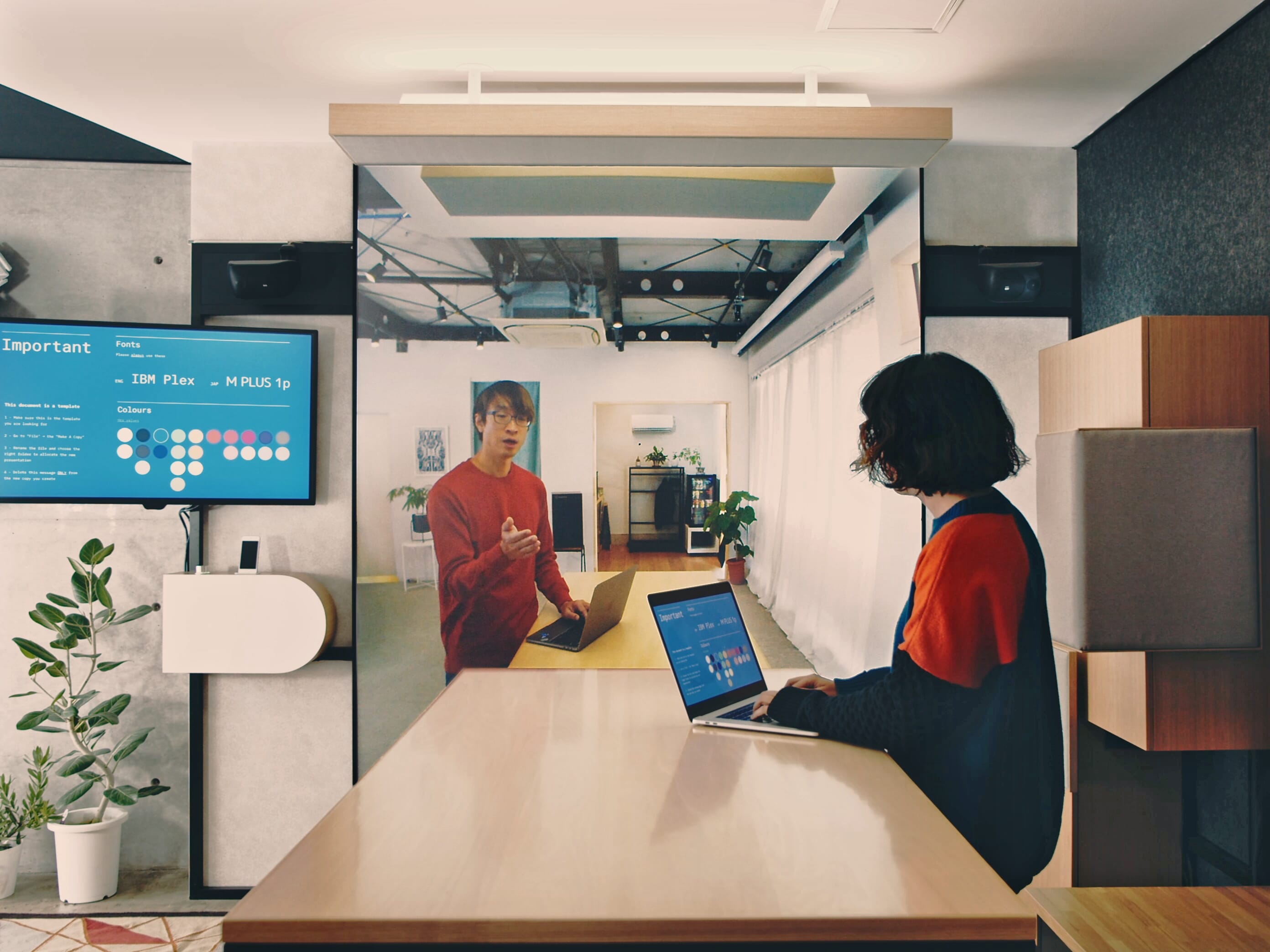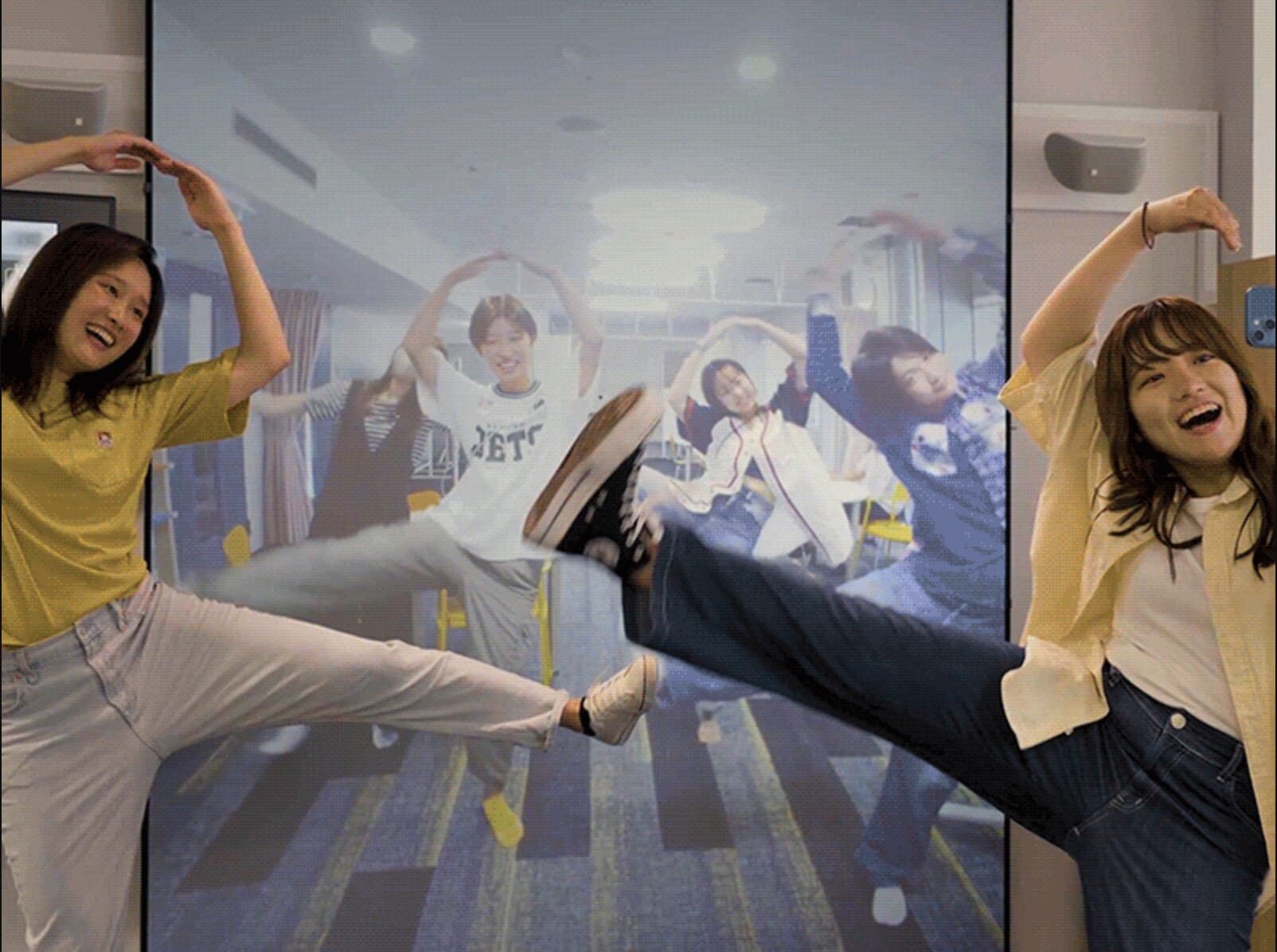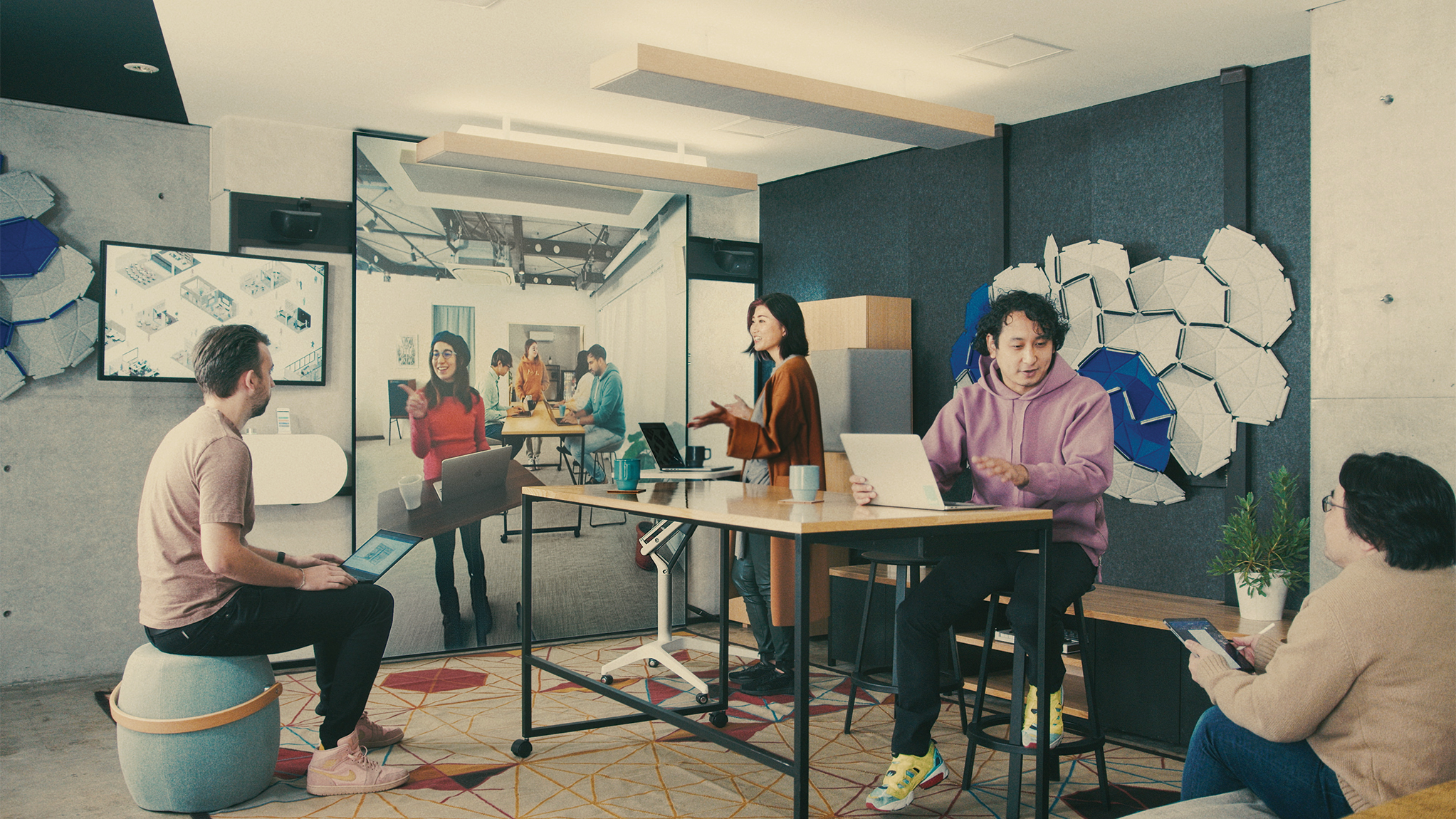A few months back, I took my first long haul flight since the pandemic. Due to the incredible distance to Narita Airport, the slow return of flight routes and the longer wait time that we’ve simply accepted as part of air travel, the journey was arduous. I commuted for over 28 hours, from the time I left the entrance of my Tokyo apartment to the gate of my family’s suburban home in Madrid, all the while praying for teleportation to become a thing. Tonari, a Tokyo-based company that builds portals between spaces, isn’t quite that yet, but it might just be the next best thing.
What is a Tonari Portal?
“One of the things we struggle with is how to express what it is that we do,” says the company’s co-founder, Taj Campbell, through Tonari. We’d arranged for an in-person interview, but I found myself sitting alone in a spacious Tokyo makerspace called Straylight, as Campbell dialed in from Tonari’s second office in Hayama. To describe Tonari by its parts is to talk about the product specifications of its model, Tonari Pro, and its 1.8m x 2.6m screen, 6.4MP in-screen camera, 3K resolution video at 60 fps and 48khz transparent audio with full dynamic range microphones and advanced noise reduction. You can find the full description on the company’s website, but none of these numbers do justice to how it actually feels to use Tonari for the first time.

A Unique Experience
The expansiveness of the screen enables a life-sized experience. I could see Campbell and his colleague Alisaun Fukugaki as they would be in real life. In fact, the office interior layout on both sides of the portal made it look like the spaces were connected. The hidden camera on the screen allows for true eye contact and the low latency and smooth video delivery meant our body language was expressive. The pauses were also natural, and we laughed at the same time. To think of Tonari as just a high-definition video call would be like 18th century humans describing a motor vehicle as “a fast horse.”
The sum of what Tonari is and what it represents is more than its parts, and all together, provides a unique experience. It is technology that actually feels human-centric. “There’s very little awkwardness. You’re no longer interrupting each other. When someone tells a joke, there isn’t someone laughing half a second too late,” says Campbell.
His first job out of school was at Google, where he worked for eight years. After moving to Tokyo, he founded a makerspace with his friends called Straylight. Through this, he became more interested in projects at the intersection of technology, both immersive and experiential. A grant gave him the opportunity to work long-term on a research project. That eventually turned into Tonari.
“It didn’t start as a straightforward business venture,” he says. “I just came with the naive question of ‘Why does everything still feel like Skype?’ We live in this globalized world with people constantly on the move. And they’re moving away from their families, whether domestically or internationally. We also leave friends and loved ones behind. And there are also mobility challenges for people who live outside of cities. So why haven’t we built portals yet?”

A Different Approach to VR
The right question also came at the right time, in terms of technological advancements. Campbell says attempting Tonari 10 years ago would not have been possible due to the costs of projectors and big displays as well as the performance in graphics. In this race to bring people together through technology, Tonari takes a different approach to something that’s also been making huge advancements in the last few years: virtual reality (VR).
When asked about these different approaches, Campbell says, “In the future of VR, everyone is going to be wearing a headset which allows them to be immersed in a virtual space. We’ve started instead from an architectural angle. By creating the immersion in a physical space, you can still feel grounded in reality.”
Within Japan, Tonari recently worked with PlatinumGames. A studio known globally for titles such as NieR:Automata and the Bayonetta series, it opened an office in Tokyo and wanted to connect it with its headquarters in Osaka. Chief designer Hideki Kamiya and his animation team lauded the technology for its ability to conduct brainstorming sessions across offices and the ease in which nuanced details of animation could be physically acted out.
Working with JR East
Tonari has also worked with JR East on the Shinagawa Development Project, which included the construction of Takanawa Gateway Station. The team became more dispersed between their Shinjuku headquarters and a temporary office near the development site. Through Tonari, JR East was able to continue to implement strategies and foster team growth. The ability to meet face-to-face every day regardless of physical location also helped the organization increase the speed of decision-making.
The Future of Tonari
Business aside, will there be a future one day when every household has its own portal? Campbell remains cautiously optimistic. “I don’t know if we can be a vertical product like Apple and its retail stores,” he says. “But our end game is to develop a version of the product that’s cheap enough for use among families. This is how we came up with our more affordable model, Tonari Lite. I think of people like my mom as a potential power user. She spends at least five hours a day on the phone. I’d like to give people like that the ability to really stay in close contact with their loved ones.”
Related Posts
- The Gaming Beaver Unearths Japan’s Dinosaur Obsession
- Japan Tech Trends: Robots That Don’t Do Much
- How ChatGTP is Disrupting Japan
Updated On February 8, 2024








